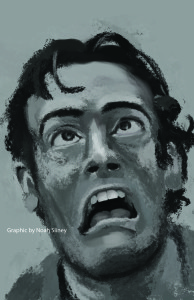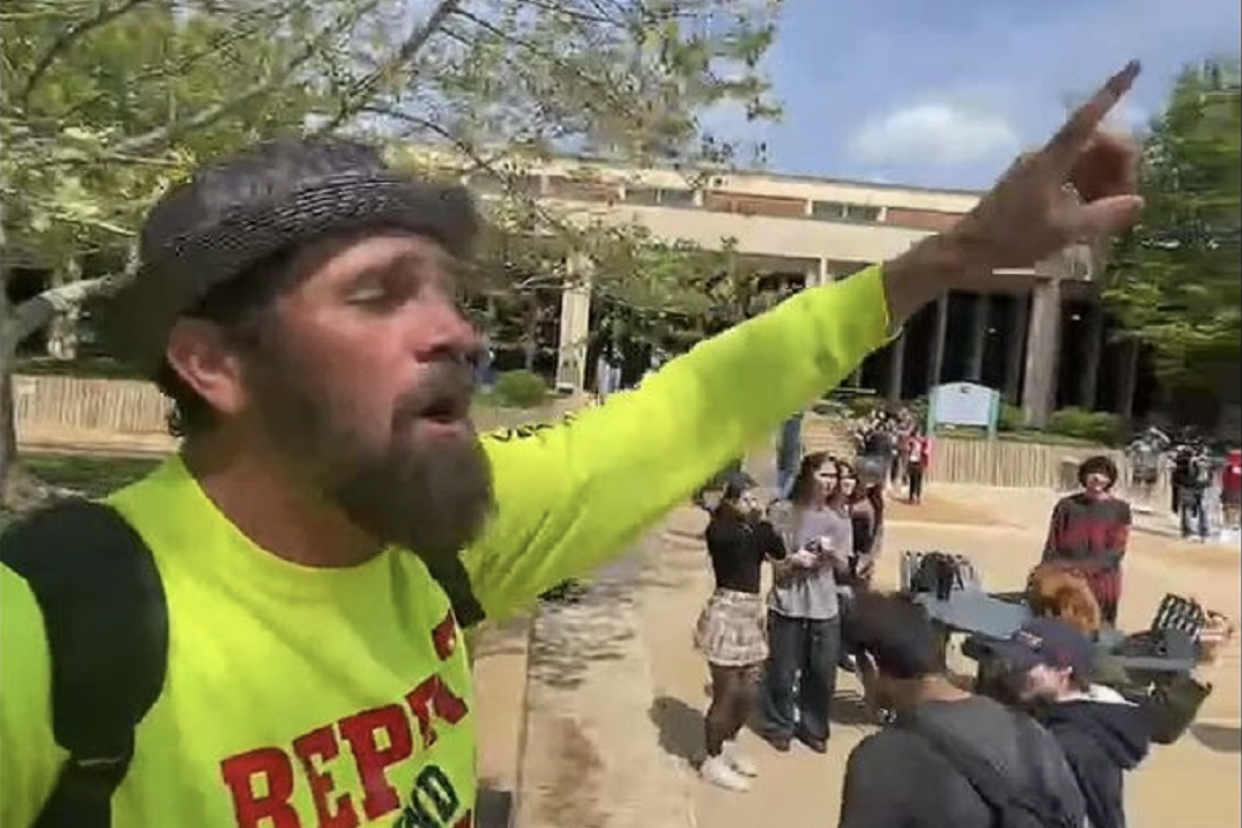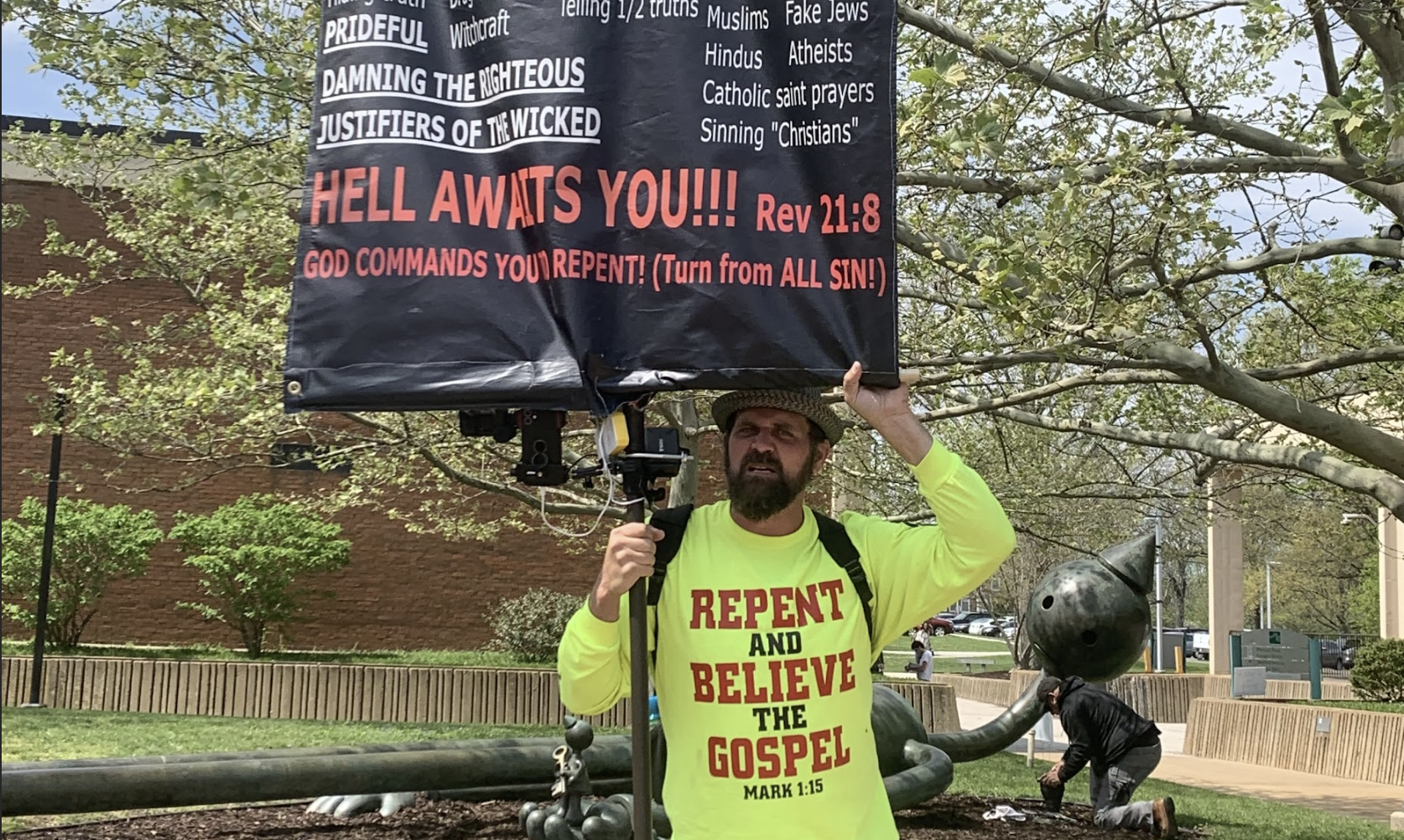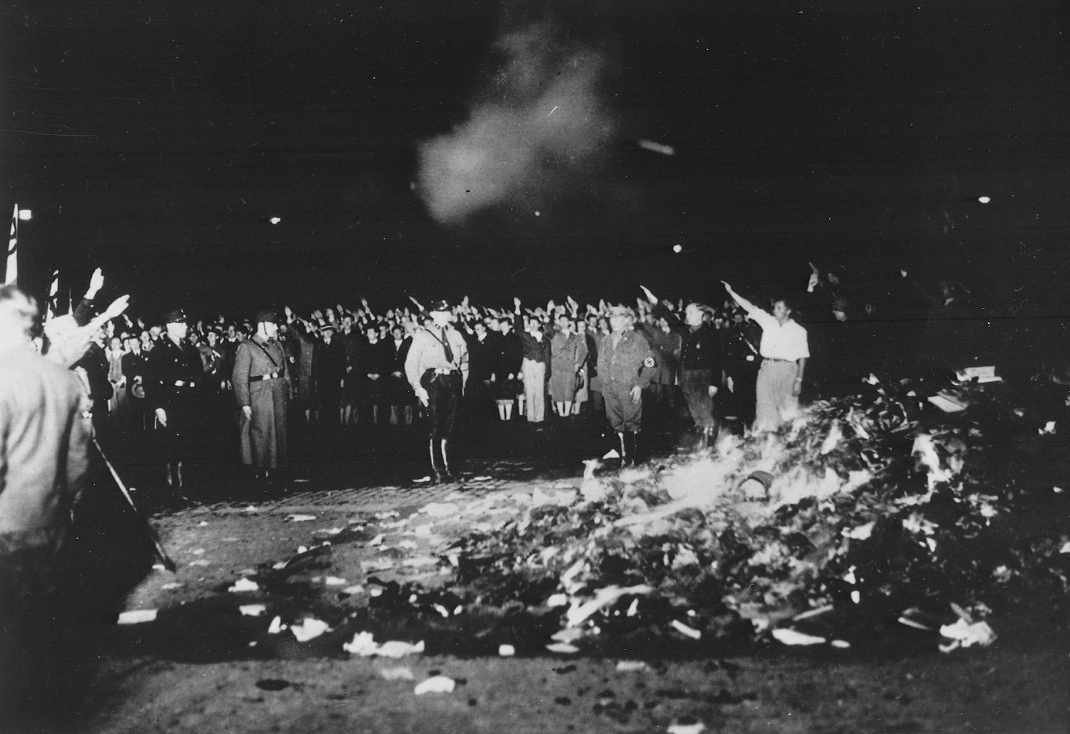BY:  Morgan Ratliff
Morgan Ratliff
Staff Writer
Horror movies are notorious for their ridiculous premises: “Jason Takes Manhattan” is the eighth film in the “Friday the 13th” franchise, where Jason takes a steamy teenage love-boat cruise to the “big apple” and wreaks havoc upon punks and sluts; “Freddy’s Revenge” is the second film in the “Nightmare on Elm Street” franchise, where a homoerotic Freddy takes on a particularly homoerotic teenage kid and uses him to do his gay-fantasy bidding; “Halloween 6: The Curse of Michael Meyers” is the sixth film in the “Halloween” franchise, where Michael is an un-killable, cursed maniac from a cult looking for vengeance against Paul Rudd for stealing his niece’s incestual rape-baby. In order to avoid being a forgettable sequel in a tedious franchise, horror movies must move away from the ridiculous.
Take, for example, “The Evil Dead”, which starts with teenagers squatting in a remote cabin deep in the woods. The two guys find the Necronomicon, an evil book of the dead from which, if the incantations are spoken, demonic forces shall rise. They find a tape with the book and listen to it. Lo and behold, incantations are played and demons rise from the now-alive surrounding forest. Variously grotesque, increasingly disturbing possessions occur in the fashion of gloriously 80’s, prototypical-Tim Burton claymation before the film’s inevitably violent, bleak conclusion leaves viewers with a strong cliffhanger. Although “The Evil Dead” has an impressive cult following, severely outdated visuals, low-budget cinematography and indie ethic wrapped up in the Necronomicon premise make it a truly ridiculous movie. Low-budget indie films have evolved over time.
“Veronica” is a far more modern movie of that type from the last few years. A Spanish teenager plays with a Ouija board and unintentionally invites demonic forces into her family’s home. At times, the movie maturely tackles adolescence through its scope, discussing puberty, angst, the superficialities of teenage friendships and choosing between desire and responsibility. At other times, the movie remembers its Ouija board premise and falls back on jump scares, quirky nightmare sequences, and general spooks of no certain importance. It’s in between something like “The Evil Dead” and something like “Texas Chainsaw Massacre.”
“Texas Chainsaw Massacre” sounds like a stupid movie (and it is the grand-daddy of slasher films) but the highly-inventive minimalism of its style, upfront presentations of gore, and darkly comedic musings on draft dodgers, mental disabilities and keeping family together at any cost makes it stand out uniquely.
A couple of young, draft dodging guys and their skimpily dressed girlfriends are on a road trip through Texas, avoiding the Vietnam War and having a grand time. Along the way, they pick up a crazy hitchhiker, their car breaks down and they stumble across a rather spooky family. Over the course of the day, they are all brutally murdered by the family’s youngest sibling. The farthest this movie delves into ridiculousness is its antagonist, but even he is based on the real-life Ed Gein, a serial killer who slaughtered and cannibalized two women and desecrated several bodies.
All in all, horror movies are widely known for their ridiculous premises which generally define the rest of the movie. Issues stem from this because quality suffers immensely as films are forced into a goofy, limiting bottleneck that simultaneously tears down the film’s ability to scare and its structural integrity: jump-scares become moot, plots become filled with holes, and characters become thinner (literally and figuratively) and shallower than a baby pool. As such, horror movies must seriously consider how they can construct a more realistic set-up and ensure the film has a variety of intact possibilities and plenty of potential for genuine scares, actual discussion and leaving a
lasting impression.











